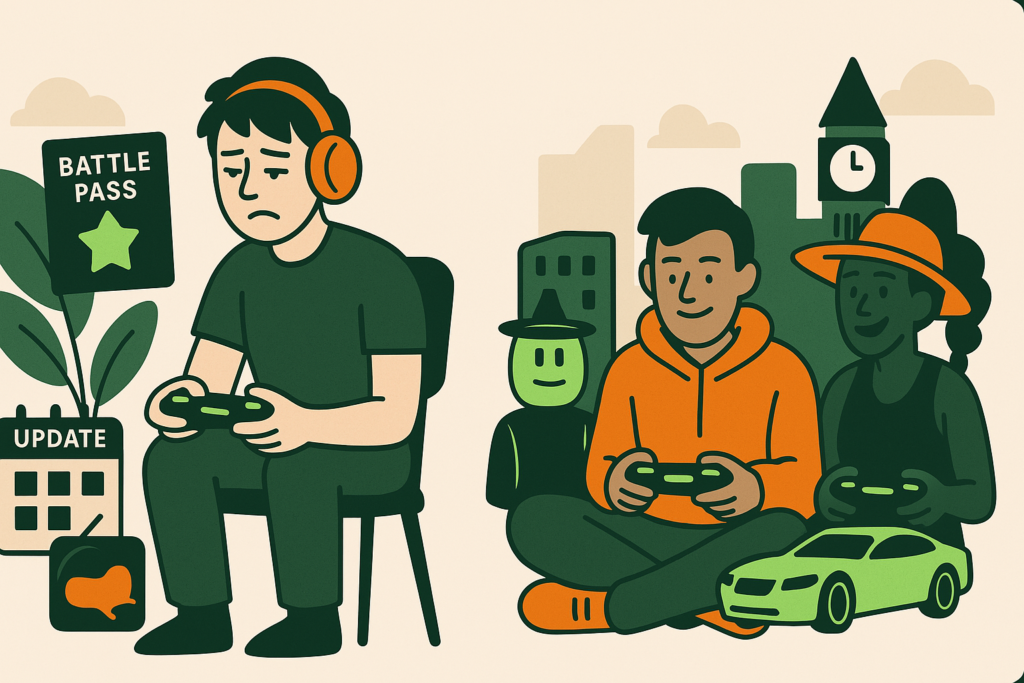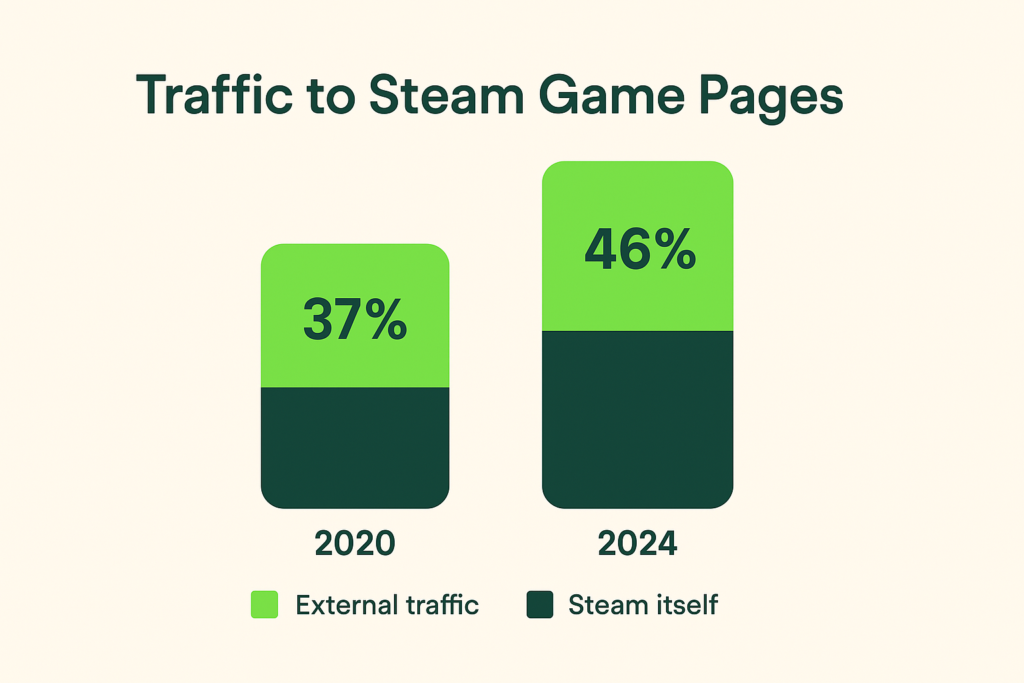In an oversaturated games market where players are engaging with fewer titles and discoverability is at an all-time low, studios are being forced to rethink how they acquire and retain players.
Newzoo’s 2025 PC & Console Gaming Report makes one thing clear: community isn’t a nice-to-have—it’s becoming the most important driver of growth.
Here’s what the data says, and what it means for game studios in 2025 and beyond.
1. Discoverability Has Moved Off-Platform
Steam is still the primary platform for PC gaming, but fewer players are finding games on Steam itself.
In 2020, 37% of traffic to Steam game pages came from external sources. In 2024? That number jumped to 46%.
That traffic is being driven by Discord servers, creator communities, group chats, TikTok trends, and shared memes—not just ads or traditional PR.
What this means:
If you’re not building community hype before launch, you’re invisible at launch. Studios need to treat Discord and creator ecosystems as part of their UA funnel, not an afterthought.
2. Players Are Choosing Fewer Games—Together
The average number of games played per user is declining across Steam, PlayStation, and Xbox. Most players are now only engaging deeply with 1–3 games per year.
This has two consequences:
-
If you don’t win a player’s attention early, you likely won’t win it at all.
-
Players often switch titles together, as a group.
What this means:
Community has a network effect. You’re not just converting players—you’re converting friend groups. Studios that foster pre-launch community can activate entire cohorts instead of isolated users.
3. Retention is a Community Problem, Not Just a Content One
Even the best battle pass or update cadence won’t retain players if they don’t feel a reason to stick around.
Why are players returning to 6+ year-old games like Fortnite, Roblox, and GTA V?
Because that’s where their friends and culture still live.
What this means:
Content matters—but belonging matters more. Retention strategies must include ongoing community engagement: events, in-server content, mod spotlights, Q&As, or role-based progression systems that build identity and connection.
 4. Free-to-Play Churn Is High—But Community Softens the Fall
4. Free-to-Play Churn Is High—But Community Softens the Fall
F2P titles are easy to download—and even easier to drop.
Marvel Rivals, Fortnite, Roblox all drove major 2024 growth in F2P playtime, but older F2P games (like Overwatch 2) lost players rapidly if they weren’t backed by engaging community activity or shared moments.
What this means:
If you’re launching a live service title, community is your retention moat. It gives players reasons to keep logging in even when content is between cycles.
Conclusion: The Opportunity is Clear
Game studios investing in community aren’t just building hype—they’re building distribution, retention, and loyalty.
The smartest teams in 2025 are treating Discord as a core product pillar, not just a support channel.
Want help building a community that actually drives growth?
Download our 2025 Discord for UA and Retention Playbook
Talk to us at Levellr.com. We help studios design, launch, and grow high-performing communities on Discord—from onboarding flows to monetization.


